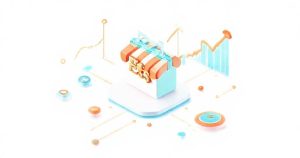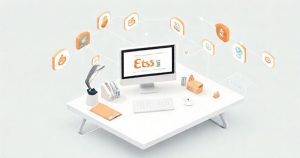Etsy integrations are third party applications and software that connect to your shop to automate tasks, streamline workflows, and unlock new capabilities. For sellers aiming to scale their business, these tools are not just a convenience but a strategic necessity. By connecting specialized services for marketing, shipping, accounting, and production, you can save valuable time, reduce manual errors, and focus on what truly matters: creating great products and growing your brand. This guide explores the essential integrations that can transform your Etsy shop from a manual operation into an efficient, automated powerhouse.
Why Etsy Integrations Are Essential for Growth
As an Etsy shop grows, so do the administrative tasks. Manually managing inventory across multiple platforms, tracking finances in a spreadsheet, or personally sending marketing emails becomes unsustainable. Etsy integrations solve this problem by creating a connected ecosystem where data flows seamlessly between different tools. This automation is the key to scaling efficiently. It allows you to handle a higher volume of orders without a proportional increase in your workload, ensuring a consistent customer experience even during peak seasons. These tools are the bridge between being a hobbyist and a professional business owner.
Furthermore, integrations provide access to powerful features not native to the Etsy platform. Advanced analytics can offer deeper insights into customer behavior, while email marketing platforms enable you to build a direct relationship with your audience. Print on demand integrations completely remove the need to hold physical inventory, opening up new product lines with minimal risk. Ultimately, leveraging the right Etsy integrations empowers you to compete more effectively, make data driven decisions, and build a more resilient and profitable business that can thrive in the long term.
Key Categories of Etsy Integrations for Sellers
Understanding which tools to use begins with identifying your shop’s biggest needs. Most Etsy integrations fall into several key categories, each designed to solve a specific set of challenges for sellers. Focusing on one or two areas at first can deliver the most significant impact.
1. Print on Demand and Fulfillment Services
For sellers of apparel, home decor, and paper goods, print on demand (POD) integrations are revolutionary. Services like Printful and Printify connect directly to your Etsy shop. When a customer places an order for a POD product, the integration automatically sends the order details to the production partner. They then print, pack, and ship the item directly to your customer under your brand. This model eliminates inventory risk, production overhead, and shipping logistics, allowing you to offer a wide variety of designs and products with zero upfront cost.
2. Marketing and Email Automation
Building a brand off of Etsy is critical for long term stability. Email marketing integrations such as AWeber or Mailchimp allow you to capture customer emails (with their consent) and build a mailing list. You can then automate welcome series, announce new products, or send exclusive promotions. This direct line of communication helps foster customer loyalty and drives repeat purchases, reducing your reliance on Etsy’s internal traffic and algorithm. These tools turn one time buyers into a community of dedicated fans who are invested in your brand’s journey.
3. Accounting and Financial Management
Manually tracking Etsy fees, material costs, shipping expenses, and revenue can quickly become overwhelming and prone to error. Accounting integrations like QuickBooks or specialized tools like Craftybase automate this entire process. They sync your sales and expense data directly from Etsy, categorizing transactions and generating financial reports. This provides a clear, real time view of your shop’s profitability, simplifies tax preparation, and helps you make smarter financial decisions about pricing, ad spend, and inventory investment. It professionalizes your bookkeeping with minimal effort.
4. Social Media and Content Management
Promoting your products on social media is a key driver of external traffic. Integrations designed for social media management can automate the process of sharing your Etsy listings on platforms like Pinterest, Instagram, and Facebook. Tools like Outfy can automatically create and schedule posts for your new products, sales, or positive reviews. This ensures a consistent social media presence without requiring you to spend hours each day manually creating content, freeing you up to engage with your community and focus on creating new products for your shop.
Choosing the Right Etsy Integrations for Your Business
With so many options available, selecting the right Etsy integrations can feel daunting. The best approach is to start by identifying your biggest bottleneck. Are you spending too much time on shipping? A fulfillment integration might be the answer. Is financial tracking causing stress? Look into accounting software. Once you identify the problem, research a few top rated solutions in that category. Read reviews from other Etsy sellers and take advantage of free trials to see if the tool fits your workflow before committing to a paid subscription. Start small with one or two key integrations and build your toolkit over time.
Manual Workflow vs. An Integrated Ecosystem: A Strategic Analysis
Every Etsy seller faces a choice: continue with manual processes or invest in an integrated system. A manual workflow offers simplicity and no initial cost, making it ideal for new sellers with low order volume. You have full control and can learn the fundamentals of the business. However, this approach does not scale. As orders increase, the risk of human error in order fulfillment, inventory management, and financial tracking grows exponentially. It becomes a ceiling on your potential growth, as your time is consumed by operations rather than strategy.
In contrast, an integrated ecosystem built with carefully selected Etsy integrations is designed for scale. While it may involve monthly subscription fees, the return on investment comes from massive time savings, improved accuracy, and enhanced marketing capabilities. An automated system can process a hundred orders with the same efficiency as ten. It provides the data and infrastructure needed to make strategic decisions, allowing you to expand your product lines, explore new markets, and build a sustainable brand. The transition from manual to integrated is a critical milestone in the journey of a professional Etsy seller.
The Untapped Potential of a Connected Etsy Store
Ultimately, Etsy integrations are more than just tools; they are strategic assets that create a more resilient, efficient, and scalable business. By automating the repetitive tasks that consume your day, you unlock the time and mental space needed for creative work and strategic planning. A connected store operates smoothly in the background, providing a professional experience for your customers and powerful data for you. Embracing this technology is the key to moving beyond the limitations of the platform and building a brand that has the potential for significant, long term growth in the competitive world of ecommerce.






